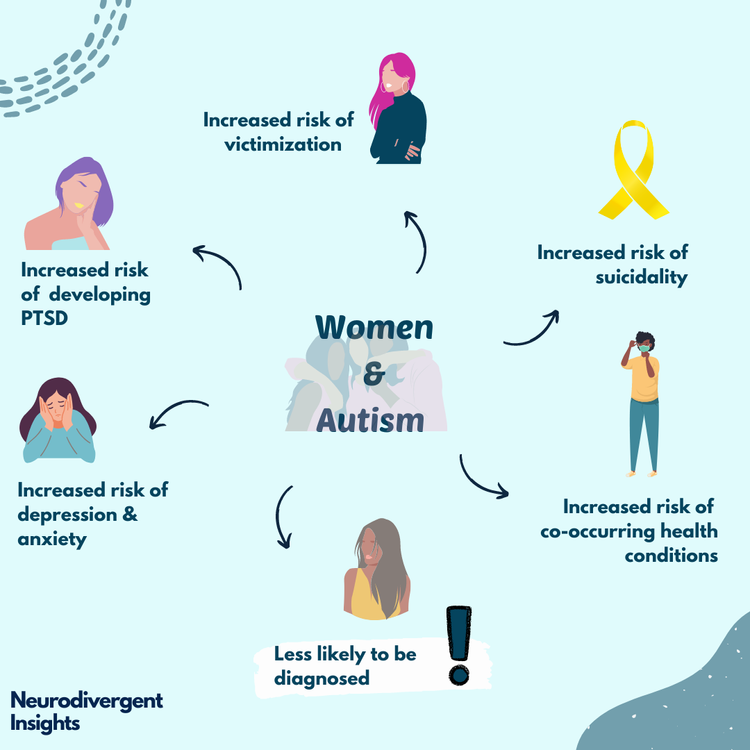Discovering Autism: Methods for Efficient Interaction and Interaction
Efficient interaction and communication with individuals on the autism range demand a comprehensive understanding of their special needs and preferences. The ins and outs of these approaches reveal additional factors to consider that merit exploration, specifically in how they can be adapted to diverse contexts and individual experiences.
Understanding Autism Range Problem
Autism Spectrum Problem (ASD) encompasses a variety of neurodevelopmental conditions identified by difficulties in social interaction, interaction, and repeated actions. The term "spectrum" mirrors the diverse indications and varying levels of intensity experienced by individuals with ASD. While some might display considerable disabilities, others may present high-functioning attributes, permitting for better self-reliance in everyday life.
The start of ASD typically happens in very early youth, with signs usually identifiable by age two. Early indicators might include delayed speech advancement, limited eye call, and troubles in recognizing social cues. Although the exact etiology of ASD remains unclear, research suggests a combination of hereditary and environmental variables plays a vital duty in its development.
People with ASD usually possess unique strengths, such as heightened interest to detail and outstanding memory skills. They might have a hard time with comprehending abstract principles and taking care of adjustments to regular - autism. Because of this, treatments and support tailored to individual demands are essential for fostering communication and social abilities. Identifying the intricacy of ASD is essential for promoting recognition, acceptance, and effective strategies that promote purposeful interactions with individuals on the spectrum.

Value of Clear Communication
Efficient interaction is important for cultivating understanding and connection, specifically for people with Autism Spectrum Problem (ASD) Clear communication not only promotes social communications but likewise enhances the individual's capacity to share their demands, thoughts, and feelings. For people with ASD, the subtleties of language can typically be testing; for that reason, utilizing simple and unambiguous language is crucial.
Furthermore, clear communication helps in reducing aggravation and anxiety that might occur from misconceptions. When messages are communicated in a straight and consistent manner, people with ASD are better geared up to translate information precisely, which can substantially enhance their social interaction and participation in different settings.
Developing routines and making use of aesthetic supports can further boost clear interaction. These methods supply individuals with foreseeable structures that assist comprehension and retention of details. In addition, actively paying attention and being person throughout communications advertises an encouraging environment where people with ASD really feel valued and comprehended.
Inevitably, focusing on clear communication not only encourages individuals with ASD yet also promotes even more significant connections with their peers, caretakers, and the bigger community, leading the way for joint relationships and inclusive communications. - autism
Non-Verbal Interaction Techniques
Communication prolongs past words, and for individuals with Autism Range Disorder (ASD), non-verbal cues play a significant duty in interactions. Non-verbal communication strategies can consist of face expressions, gestures, body language, and eye call, every one of which act as vital components for sharing purposes and emotions.
Comprehending and analyzing these non-verbal signals can enhance interactions with individuals with ASD. A cozy smile or open pose can produce a welcoming ambience, urging interaction. Similarly, making use of aesthetic aids-- such as photo cards or symbols-- can link interaction voids and aid communicate messages better.
It is additionally vital to be conscious of individual space, as people with ASD might have different comfort levels concerning closeness. Observing their reactions to physical closeness can notify appropriate changes.

Producing Helpful Atmospheres
Creating a supportive atmosphere is essential for promoting favorable interactions and enhancing the wellness of individuals with Autism Range Condition (ASD) Such settings important link can substantially minimize stress and anxiety and produce a feeling of security, enabling people to express themselves much more openly.
To accomplish this, it is crucial to consider sensory sensitivities that individuals with ASD may experience. Customizing the physical room to include soft illumination, very little background sound, and comfy seating can produce a relaxing atmosphere. In addition, making use of consistent routines and clear aesthetic timetables can aid individuals expect transitions and reduce unpredictability, additional promoting convenience.
Social rooms need to be structured to minimize frustrating stimulations while supplying opportunities for engagement in favored activities. Promoting locations marked for silent time can additionally function as a refuge throughout minutes of stress and anxiety. Importantly, including elements of choice equips individuals, permitting them to exercise company in their environment.

Urging Social Communications
Cultivating social communications among individuals with Autism Range Disorder (ASD) requires willful approaches that prioritize comfort and engagement. Developing predictable routines can help in reducing anxiousness, making social settings more friendly. Producing structured environments with specified responsibilities and duties permits individuals to engage without the overwhelming pressure of unstructured social dynamics.
Incorporating interests and toughness into social activities can act as a catalyst for communication. For example, organizing group activities around shared pastimes or subjects of fascination can facilitate all-natural conversations and links. In addition, making use of visual supports, such as photographic timetables or social scripts, can help in understanding social signs and expectations.
Modeling proper social actions is essential - autism. Grownups and peers must demonstrate my response efficient communication strategies, including active listening and turn-taking. Role-playing situations can likewise provide a risk-free space for individuals to practice these skills
Lastly, promoting peer relationships with inclusive methods is necessary. Encouraging inclusive playdates or group outings can develop chances for socialization in a comfortable setup. By applying these techniques, instructors and caretakers can substantially improve social interactions for individuals with ASD, advertising their total social advancement and well-being.
Verdict
In verdict, efficient communication and interaction techniques are important for sustaining individuals with Autism Spectrum Condition. Emphasizing clear language, integrating non-verbal hints, and developing predictable regimens substantially enhance interaction and minimize stress and anxiety. Producing helpful settings cultivates safe social interactions, while urging shared interests promotes significant links. Ultimately, these methods encourage individuals with autism to browse social landscapes, promoting their total well-being and allowing the development of long lasting partnerships.
Effective communication and interaction with people on the autism range require a detailed understanding of their distinct needs and choices. Clear communication not just promotes social communications but also improves the person's ability to share their needs, thoughts, and feelings.Fostering social communications amongst individuals with Autism Spectrum Condition (ASD) requires deliberate methods that focus on comfort and interaction. By implementing these caregivers, teachers and techniques can substantially enhance social communications for people with ASD, her comment is here promoting their general social growth and well-being.
In final thought, reliable interaction and communication methods are vital for supporting people with Autism Range Disorder.